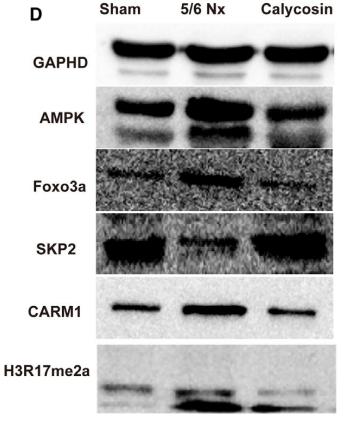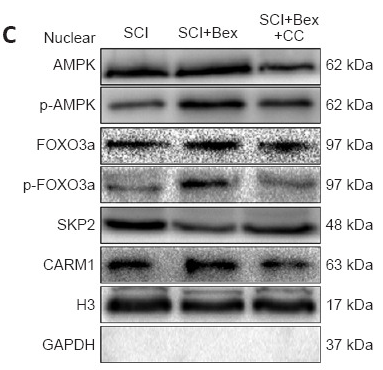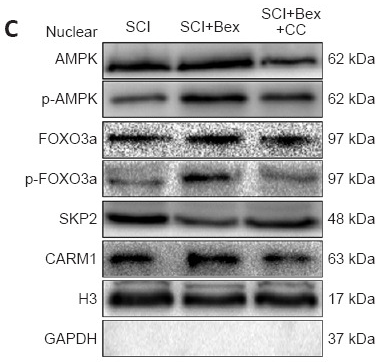SKP2/p45 Antibody - #AF0505
製品説明
*The optimal dilutions should be determined by the end user. For optimal experimental results, antibody reuse is not recommended.
*Tips:
WB: For western blot detection of denatured protein samples. IHC: For immunohistochemical detection of paraffin sections (IHC-p) or frozen sections (IHC-f) of tissue samples. IF/ICC: For immunofluorescence detection of cell samples. ELISA(peptide): For ELISA detection of antigenic peptide.
引用形式: Affinity Biosciences Cat# AF0505, RRID:AB_2834158.
折りたたみ/展開
CDK2/Cyclin A associated protein p45; Cyclin A/CDK2 associated protein p45; Cyclin-A/CDK2-associated protein p45; F box protein Skp2; F box/LRR repeat protein 1; F-box protein Skp2; F-box/LRR-repeat protein 1; FBL 1; FBL1; FBXL 1; FBXL1; FLB 1; FLB1; MGC1366; p45; p45skp2; S phase kinase associated protein 2 (p45); S phase kinase associated protein 2; S-phase kinase-associated protein 2; S-phase kinase-associated protein 2 E3 ubiquitin protein ligase; SKP 2; Skp2; SKP2_HUMAN;
免疫原
A synthesized peptide derived from human SKP2/p45, corresponding to a region within C-terminal amino acids.
- Q13309 SKP2_HUMAN:
- Protein BLAST With
- NCBI/
- ExPASy/
- Uniprot
MHRKHLQEIPDLSSNVATSFTWGWDSSKTSELLSGMGVSALEKEEPDSENIPQELLSNLGHPESPPRKRLKSKGSDKDFVIVRRPKLNRENFPGVSWDSLPDELLLGIFSCLCLPELLKVSGVCKRWYRLASDESLWQTLDLTGKNLHPDVTGRLLSQGVIAFRCPRSFMDQPLAEHFSPFRVQHMDLSNSVIEVSTLHGILSQCSKLQNLSLEGLRLSDPIVNTLAKNSNLVRLNLSGCSGFSEFALQTLLSSCSRLDELNLSWCFDFTEKHVQVAVAHVSETITQLNLSGYRKNLQKSDLSTLVRRCPNLVHLDLSDSVMLKNDCFQEFFQLNYLQHLSLSRCYDIIPETLLELGEIPTLKTLQVFGIVPDGTLQLLKEALPHLQINCSHFTTIARPTIGNKKNQEIWGIKCRLTLQKPSCL
種類予測
Score>80(red) has high confidence and is suggested to be used for WB detection. *The prediction model is mainly based on the alignment of immunogen sequences, the results are for reference only, not as the basis of quality assurance.
High(score>80) Medium(80>score>50) Low(score<50) No confidence
研究背景
Substrate recognition component of a SCF (SKP1-CUL1-F-box protein) E3 ubiquitin-protein ligase complex which mediates the ubiquitination and subsequent proteasomal degradation of target proteins involved in cell cycle progression, signal transduction and transcription. Specifically recognizes phosphorylated CDKN1B/p27kip and is involved in regulation of G1/S transition. Degradation of CDKN1B/p27kip also requires CKS1. Recognizes target proteins ORC1, CDT1, RBL2, KMT2A/MLL1, CDK9, RAG2, FOXO1, UBP43, and probably MYC, TOB1 and TAL1. Degradation of TAL1 also requires STUB1. Recognizes CDKN1A in association with CCNE1 or CCNE2 and CDK2. Promotes ubiquitination and destruction of CDH1 in a CK1-Dependent Manner, thereby regulating cell migration.
Through the ubiquitin-mediated proteasomal degradation of hepatitis C virus non-structural protein 5A, has an antiviral activity towards that virus.
Ubiquitinated by the APC/C complex, leading to its degradation by the proteasome. Deubiquitinated by USP13.
Acetylation at Lys-68 and Lys-71 increases stability through impairment of APC/C-mediated proteolysis and promotes cytoplasmic retention. Deacetylated by SIRT3.
Cytoplasm. Nucleus.
研究領域
· Cellular Processes > Cell growth and death > Cell cycle. (View pathway)
· Environmental Information Processing > Signal transduction > FoxO signaling pathway. (View pathway)
· Environmental Information Processing > Signal transduction > mTOR signaling pathway. (View pathway)
· Genetic Information Processing > Folding, sorting and degradation > Ubiquitin mediated proteolysis. (View pathway)
· Human Diseases > Infectious diseases: Viral > Herpes simplex infection.
· Human Diseases > Infectious diseases: Viral > Epstein-Barr virus infection.
· Human Diseases > Cancers: Overview > Pathways in cancer. (View pathway)
· Human Diseases > Cancers: Overview > Viral carcinogenesis.
· Human Diseases > Cancers: Specific types > Small cell lung cancer. (View pathway)
参考文献
Application: WB Species: Mouse Sample: spinal cord
Application: WB Species: Mouse Sample:
Application: WB Species: rat Sample: muscles
Application: WB Species: human Sample: 5637, T24, EJ and J82 cells and SV-HUC-1
Restrictive clause
Affinity Biosciences tests all products strictly. Citations are provided as a resource for additional applications that have not been validated by Affinity Biosciences. Please choose the appropriate format for each application and consult Materials and Methods sections for additional details about the use of any product in these publications.
For Research Use Only.
Not for use in diagnostic or therapeutic procedures. Not for resale. Not for distribution without written consent. Affinity Biosciences will not be held responsible for patent infringement or other violations that may occur with the use of our products. Affinity Biosciences, Affinity Biosciences Logo and all other trademarks are the property of Affinity Biosciences LTD.






